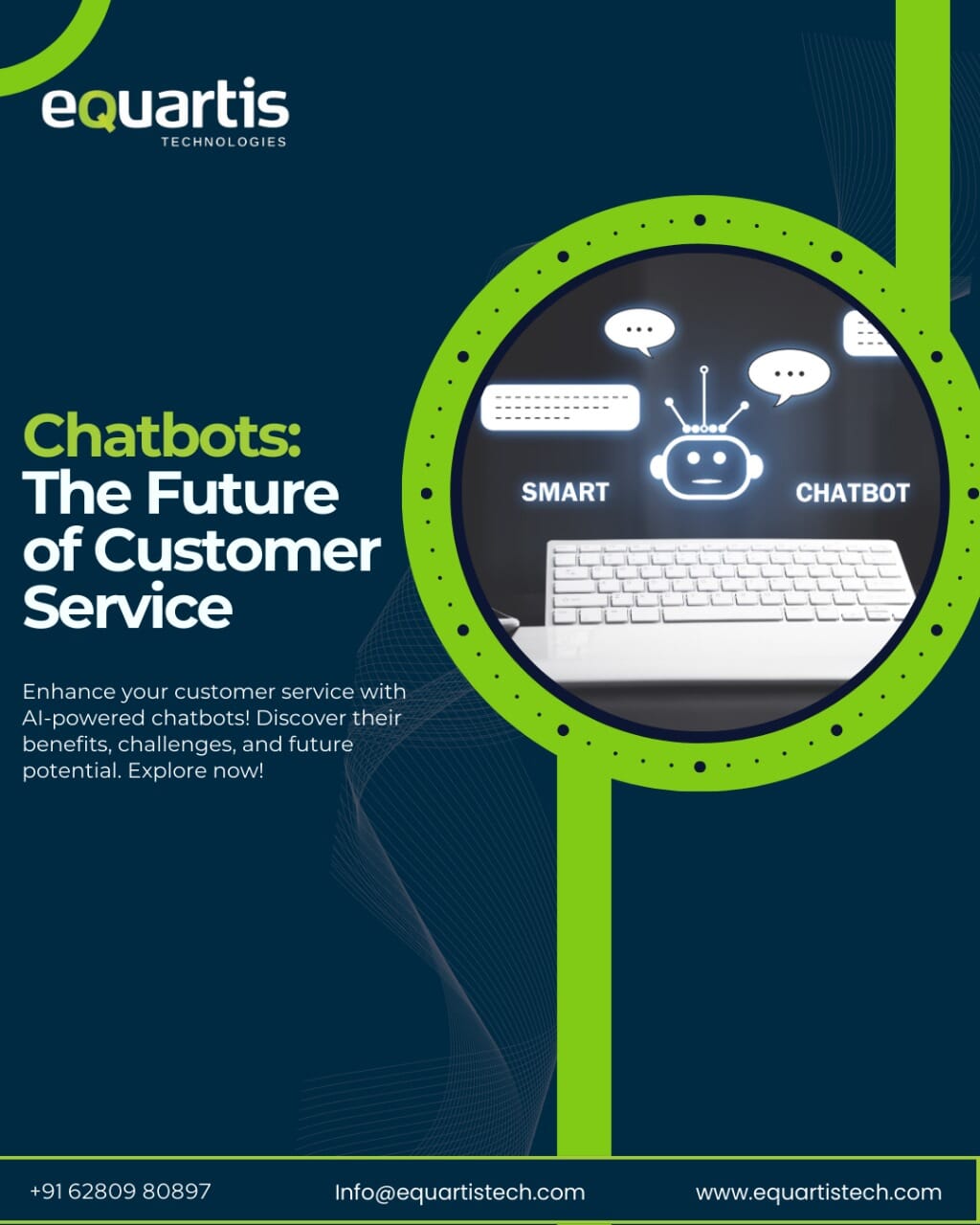
Hook
Imagine this — it’s midnight, and you’re facing an issue with a product you recently purchased. You visit the company’s website, hoping for assistance, and within seconds, a friendly chatbot pops up, ready to solve your problem. No wait times, no frustration — just instant support. Sounds ideal, right? This is the reality chatbots are bringing to customer service.
Brief Overview
As businesses strive to provide exceptional customer service, chatbot have emerged as a game-changing tool. Their ability to handle inquiries, provide instant responses, and work around the clock makes them invaluable in today’s fast-paced digital world.
Purpose
This blog explores the impact of chatbots on customer service and their promising future. We’ll dive into their functionality, benefits, challenges, and how they are shaping the future of customer interactions. By the end of this comprehensive guide, you’ll have a clear understanding of why chatbots are revolutionizing the customer service industry.
What Are Chatbots?
Definition: Chatbots are software applications designed to simulate human conversation through text or voice interactions. They leverage artificial intelligence (AI), natural language processing (NLP), and machine learning to understand and respond to user queries. Essentially, chatbot act as virtual assistants, providing automated yet interactive communication with users.
Types of Chatbots:
- Rule-Based Chatbots: Operate on predefined scripts and follow decision trees. They’re best suited for handling simple and repetitive tasks, such as answering FAQs and providing standard information.
- AI-Powered Chatbots: Use machine learning and NLP to understand context, learn from interactions, and provide more personalized and accurate responses. These chatbots improve over time, offering smarter and more intuitive conversations.
Brief History: Chatbots have come a long way since their inception. ELIZA, created in the 1960s, was one of the first chatbot, using simple pattern matching. In the 1990s, ALICE (Artificial Linguistic Internet Computer Entity) advanced chatbot capabilities with natural language processing. Today, chatbots like Siri, Alexa, and Google Assistant showcase the incredible advancements in AI and voice recognition, making digital interactions more human-like than ever before.
The Rise of Chatbots in Customer Service
Early Adoption: Initially, chatbots were simple tools limited to answering basic FAQs. Early adopters saw their potential in reducing workload and providing instant support. Companies like airlines and telecom providers began using chatbot to manage booking inquiries and service requests.
Technological Advancements: With advancements in AI, NLP, and machine learning, chatbots have become more sophisticated. They now handle complex queries, understand context, and offer personalized solutions. Technologies like sentiment analysis and predictive analytics further enhance their capabilities, making them proactive rather than reactive.
Current Adoption Rates: According to recent studies, over 80% of businesses plan to use chatbots by 2025. Industries like e-commerce, healthcare, banking, and travel are leading the adoption, recognizing their efficiency and cost-saving benefits. Chatbots are becoming integral to customer support systems, helping companies manage high inquiry volumes without compromising service quality.
Benefits of Chatbots in Customer Service
24/7 Availability: Chatbots provide round-the-clock support, ensuring customers get assistance anytime, anywhere. This availability reduces frustration and increases satisfaction, as customers no longer have to wait for business hours to resolve issues.
Instant Response: By eliminating wait times, chatbots enhance customer satisfaction through quick and efficient responses. In a world where immediate gratification is expected, chatbot deliver instant answers, keeping customers engaged and satisfied.
Cost Efficiency: Chatbots reduce operational costs by handling high volumes of inquiries without the need for a large support team. Businesses save on staffing costs while maintaining high-quality service.
Handling High Volume: Unlike human agents, chatbot can manage multiple conversations simultaneously, maintaining quality and consistency. This scalability is particularly valuable during peak times or product launches.
Personalization: AI-powered chatbots analyze user data to offer tailored recommendations and personalized experiences. They remember past interactions, making conversations more contextually relevant and enhancing customer engagement.
Multilingual Support: Chatbots can communicate in multiple languages, breaking down language barriers and expanding a business’s reach to global audiences.
Data Collection and Analysis: Chatbots collect valuable customer data during interactions, providing insights into user behavior and preferences. Businesses can use this data to improve products, services, and marketing strategies.
Case Studies
Successful Implementations:
- H&M: Their chatbot helps customers find clothing items based on their style preferences, offering a personalized shopping experience.
- Sephora: Uses chatbots for product recommendations and appointment bookings, enhancing convenience and engagement.
- Domino’s Pizza: Implemented a chatbot for order placements, simplifying the process and reducing wait times.
Lessons Learned:
- User-Friendly Design: A simple and intuitive interface ensures better user engagement. Customers should find it easy to navigate and interact with the chatbot.
- Continuous Learning: Regular updates and training improve chatbot efficiency and accuracy. Businesses should invest in AI training to keep chatbots relevant and effective.
Challenges and Limitations
Complex Queries: Chatbots often struggle with nuanced or multi-part questions requiring human empathy and judgment. Despite AI advancements, they may misinterpret context or fail to address unique concerns.
User Acceptance: Some customers prefer human interaction and may distrust automated responses. Building trust requires ensuring chatbot accuracy and providing seamless handoffs to human agents when needed.
Maintenance and Updates: Chatbots require continuous monitoring and updates to stay relevant and effective. Outdated chatbots can lead to poor customer experiences and misinformation.
Technical Glitches: System failures or integration issues can disrupt chatbot performance, leading to frustrated customers.
Limited Emotional Intelligence: While AI-powered chatbots are improving, they still lack genuine emotional understanding and empathy, which can impact customer satisfaction in sensitive situations.
The Future of Chatbots in Customer Service
AI and Machine Learning: Future chatbots will leverage advanced AI to offer even smarter and more adaptive responses. Predictive analytics will enable them to anticipate customer needs and offer proactive solutions.
Voice-Activated Chatbots: The rise of voice assistants like Alexa hints at the growing potential of voice-activated customer service chatbots. These bots will offer hands-free support, making interactions even more convenient.
Integration with Other Technologies: Combining chatbots with IoT, AR, and VR could revolutionize customer support. Imagine virtual shopping assistants guiding users through a 3D store or IoT-connected chatbots providing real-time device diagnostics.
Personalization and Emotion Detection: Future chatbots may detect user emotions and adjust their responses accordingly, offering empathetic and tailored support. Sentiment analysis will help them gauge frustration, happiness, or confusion, allowing more thoughtful interactions.
Advanced Security Measures: As chatbots handle sensitive customer data, future developments will prioritize robust encryption and compliance with data protection regulations.
Human-AI Collaboration: Rather than replacing human agents, future chatbots will complement them, handling routine queries while humans address complex and emotional issues.
Conclusion
Chatbots have revolutionized customer service with their efficiency, availability, and cost-effectiveness. Despite some challenges, their benefits far outweigh their limitations. As technology continues to advance, chatbots will play an even more significant role in enhancing customer experiences. The future of chatbots in customer service is incredibly promising. With improvements in AI, machine learning, and emotional intelligence, chatbots will become more intuitive, empathetic, and capable. Businesses that adopt and optimize chatbot technology will gain a competitive edge, providing superior customer support and driving growth. Ready to elevate your customer service? Consider integrating a chatbot and experience the transformation firsthand. Whether you’re a small business or a global enterprise, chatbots can help you deliver exceptional service with efficiency and ease.





